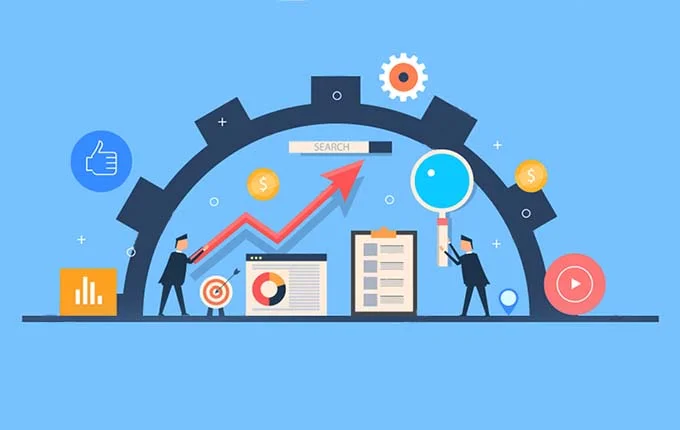Alright, let’s cut through the buzzwords. SaaS. You hear it everywhere, right? “Software as a Service.” Sounds fancy, but what does building it actually look like? Forget the textbook definitions; let me tell you how it really works from the trenches.
Think about how you watch Netflix. You don’t buy DVDs or install giant programs anymore. You just click and it works. That’s SaaS for business tools or productivity apps. It lives entirely online, in the cloud. The real magic trick modern SaaS innovations pull off? Building one smartly designed application (we call this “cloud-native” and “multi-tenant”) that securely serves thousands of different companies at once. No messy individual setups. This is why costs are lower for everyone, updates roll out smoothly without bothering users, and scaling up when you get popular feels almost effortless. It just… expands.
Building SaaS isn’t like shipping a box. Remember buying software on CDs? You got “Version 1.0” and maybe, maybe, an update a year later if you were lucky? SaaS laughs at that. It’s a living thing. Its entire heartbeat is listening to users and chasing business goals. Here’s how it flows:
- Planning: Forget just cool features. What’s actually making your customers tear their hair out? What urgent problem can you solve now? That’s where you start. Everything else is noise.
- Design & Architecture: This is the foundation. You have to build it flexible and stupidly strong from day one. Because if you hit it big, it needs to handle that growth without crumbling. Future-proofing isn’t optional.
- Development: Code gets written in short bursts (agile sprints). Why? Because we need feedback fast and the ability to change direction without rewriting the whole damn thing next week.
- Testing & Deployment: This is where SaaS shines. Updates? They happen constantly. Automated pipelines (CI/CD – Continuous Integration/Continuous Delivery) test and push out new code sometimes dozens of times a day. No more waiting months for a bug fix. It just… appears.
- Watching & Tweaking: You’re never “done.” You watch the app live. How’s performance? Where are users getting stuck? What features do they ignore? You gather that gold dust (data and feedback) and constantly refine. See Slack? Those tiny improvements every week? That’s this cycle breathing.
The Non-Negotiables (The Stuff You Sweat Over):
- Scale or Fail: Your app cannot fall over when everyone logs in Monday morning. Period. This means auto-scaling (the cloud automatically adding more server muscle when traffic spikes) and load balancing (spreading the work evenly). Think Netflix handling the Friday night binge without a hiccup – that’s the goal, powered by cloud tools like AWS.
- Security Isn’t an Afterthought: It’s baked in from line one of code. Data breaches cost millions, wreck reputations. Encryption? Mandatory. Granular access controls? Absolutely. Compliance like GDPR or HIPAA? Built-in, not bolted on later. You start secure.
- Multi-Tenancy = The Secret Sauce: This is the efficiency engine. Instead of building a whole separate copy of the app for each customer (expensive, messy, update nightmare), you build one robust application that securely houses many customers (“tenants”) on shared infrastructure. The savings are massive, and updates? Roll out to everyone instantly and uniformly. Game changer.
Getting Practical: From Sketch to Skyrocket
- MVP First, Fancy Later: Don’t try to build the Taj Mahal on day one. Build a Minimum Viable Product (MVP) – the absolute bare bones that solves that core customer pain point you identified. Get it out there fast. Learn. Adapt. Dropbox didn’t start with all its features; it started with a simple file-sync demo. User feedback built the rest.
- Picking Your Tools (The Tech Stack): This matters. You need the right hammers:
- Frontend (What users see): React, Angular, Vue.js – for making interfaces feel fast and dynamic.
- Backend (The Brains): Node.js, Python (Django/Flask are solid) – handles the logic, talks to the database.
- Cloud Home: AWS, Google Cloud, Azure – the scalable engine room. Provides servers, storage, all the heavy lifting.
- Database: PostgreSQL (reliable, structured), MongoDB (flexible for messy data) – depends on what you’re storing.
- Special Sauce: Need real-time updates? Look at Firebase or WebSockets. Heavy number crunching? AWS Lambda (serverless) or Kubernetes for orchestration. Choose tools that fit the job, not just the hype.
Keeping the Lights On (and Scaling Up)
Building it is half the battle. Running it at scale is the marathon.
- Infrastructure You Can Trust: Lean hard on cloud platforms (AWS, Azure, GCP). They give you tools for disaster recovery (so a data center outage doesn’t kill you), global reach (so users everywhere get speed), and cost control (you only pay for what you use).
- CI/CD: The Update Lifeline: Continuous Integration/Continuous Delivery is the engine. It automates testing and deployment. This is how companies like Spotify push code updates hundreds of times a day without users blinking. Essential for the SaaS “always improving” model.
- Security: Constant Vigilance: It never stops. Penetration testing (paying good guys to hack you), data anonymization (protecting user identities in your databases), audit logs (knowing exactly who touched what and when). Tools like Auth0 or Okta help massively with logins and complex compliance (GDPR, CCPA).
- Quality: Eyes Wide Open: Automated tests (checking small code units and how they play together) run constantly in your pipelines. Tools like Datadog or New Relic are your 24/7 watchdogs – monitoring performance, uptime, user behavior, errors. They scream at you the second something looks weird, so you can fix it before users notice.
- Deploying Like a Ninja: “Under Maintenance” screens are relics. Zero-downtime deployments are the standard. Blue/Green: Run the new version silently alongside the old, then instantly flip the traffic switch. Canary Release: Roll the update out to just 5% of users first. If it’s stable, unleash it to everyone. Smooth.
Where This is All Headed (Spoiler: It’s Cool)
- AI Gets Woven In: Smarter apps are coming. Predictive analytics (like Salesforce telling you which lead is hot), automated support, hyper-personalization. AI becomes part of the fabric.
- Serverless Takes Off: Focus only on your code, not the servers underneath. Services like AWS Lambda handle the infrastructure dynamically. More agility, potentially simpler ops.
- Low-Code/No-Code Grows: Empowering more people to build solutions faster with visual tools. Speeds things up, though it won’t replace core engineering for complex apps.
The Bottom Line?
The goal of contemporary SaaS development is not to deliver a frozen product. Developing a dynamic service that changes every day is the goal. By focusing on size, incorporating security from the beginning, and perfecting continuous delivery, you create something that not only satisfies user needs but also develops and changes with them. It’s a major change from cumbersome, yearly software to something timeless that is continuously improved by practical application and inventiveness. The power is that.
YOU MAY ALSO LIKE: How Penetration Testing Prevents the Next Big Data Breach











